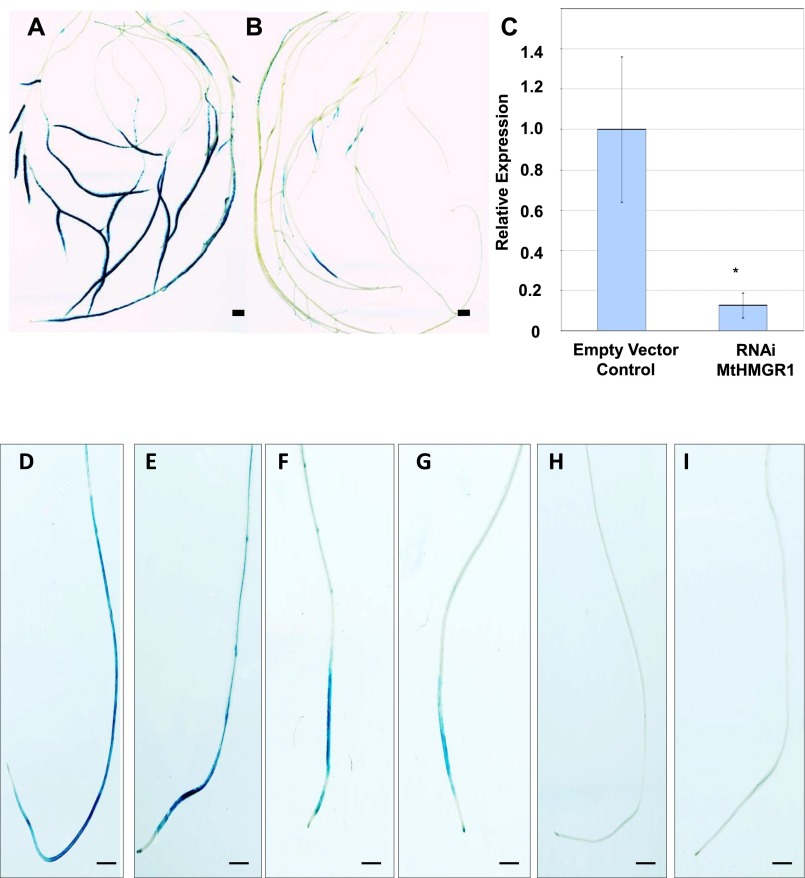Fig. S2.
Nod factor- and MVA-induced ENOD11 expression in M. truncatula wild-type, HMGR1-RNAi transgenic roots, and symbiotic defective mutants. (A) Control M. truncatula roots expressing the cytoplasmic cameleon YC3.6 show intense Nod factor-induced ENOD11-GUS expression after 12 h of treatment. (B) Silencing HMGR1 significantly reduces Nod factor-induced ENOD11 expression. (A and B scale bar, 5 mm.) (C) Quantitative RT-PCR confirms a major reduction (approx. eightfold) in Nod factor-induced ENOD11 induction in roots expressing the HMGR1-RNAi cassette. (D and E) ENOD11-GUS expression induced in wild-type M. truncatula plants after 24 h of treatment with 10 nM Nod factors (D) and 100 µM MVA (E). (F–I) Similarly, 100 µM MVA elicits ENOD11-GUS expression in the nfp-2 mutant (F), the dmi2 mutant background (G), but not in dmi1 (H) or dmi3 (I) mutants, thus showing that MVA acts downstream of DMI2 and upstream of DMI1 during symbiotic signaling. (D–I scale bar, 2 mm.)

